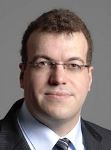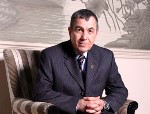Theme: Acquire Innovative Strategies in Biobanking with Evolving Evidence and New Technologies
Biobank 2018
Target Audience:
- Biobanking Researchers
- Biobanking Faculty
- Medical Colleges
- Biobanking Associations and Societies
- Business Entrepreneurs
- Training Institutes
- Cryo storage Companies
- Data Management Companies
- Global Biobanking Companies
- Biobanking investors
Sessions/Tracks
A cell bank is a facility that stores cells of specific genome for the purpose of future use in a product or medicinal needs. They often contain expansive amounts of base cell material that can be utilized for various projects.
A tissue bank is an establishment that collects and recovers human cadaver tissue for the purposes of medical research and education. A tissue bank may also refer to a location where biomedical tissue is stored under cryogenic conditions, and is generally used in a more clinical sessions.
Cell and Tissue Banking provides a forum for disseminating information to scientists and clinicians involved in the banking and transplantation of cells and tissues. Cell and Tissue Banking is an international, peer-reviewed journal that publishes original papers in such areas as quality assurance and control of banked cells and tissues; preservation and sterilization methods; clinical applications of banked cells and tissues; standards of practice in procurement, processing, storage and distribution; and ethical and medico-legal issues. Research is presented in the form of full-length papers describing original work; short communications for rapid publication; and mini- and full-length reviews of topical issues.
It is a procedure where organelles, cells, tissues, extracellular network, organs or some other natural develops defenseless to harm caused by unregulated synthetic energy are safeguarded by cooling to low temperatues (commonly 80 °C utilizing strong carbon dioxide or 196 °C utilizing fluid nitrogen). At sufficiently low temperatures, any enzymatic or substance action which may make harm the material being referred to is adequately ceased. Cryopreservation strategies look to achieve low temperatures without causing extra harm caused by the development of ice amid solidifying. Conventional cryopreservation has depended on covering the material to be solidified with a class of particles named cryoprotectants. New strategies are always being explored because of the innate poisonous quality of numerous cryoprotectants.
Blood banking means a place where blood are preserved for future use. It is preserved in plastic bag and stored in cool place.
Blood donation means voluntarily blood drawn from a person and used for transfusion,which can also be used for future use.
4.Biobanking for Rare Disease:
Biobanking is a necessary tool to produce access to top quality human biomaterial for basic and travel analysis. analysis for rare disorders advantages from the supply of human biomaterials through biobanks, and every human sample from an individual with a rare disorder incorporates a high worth because it could hold the key to answer a crucial analysis question. international cooperation in biobanking is a crucial catalyst to share restricted resources and come through best outcomes as in different areas of rare disorder analysis.
5.Bio-repository and Biospecimen:
Biorepository a biological material which helps in supporting future scientific investigation by collecting,processing,storing and distributing biospecimens. From animals including humans and many other living organisms it manages specimens.Examples can be like vertebrates,invertebrates,arthopods and other life-forms etc can be studied by preserving and storing samples.
Samples of material, such as urine, blood, tissue, cells, DNA, RNA, and protein from humans, animals, or plants. Biospecimens are stored in a biorepository and are used for laboratory research.
6.Biobanking in Microbiology :
Millions of biological samples, as well as cells of human, animal or microorganism origin, viruses, serum/plasma or DNA/RNA, square measure hold on each year throughout the globe for nosology and analysis. the aim of this review is to summarize the resources necessary to line up a biobanking facility, the challenges and pitfalls of sample assortment, and therefore the most vital techniques for separation and storage of samples. Biological samples are often hold on for up to thirty years, however specific protocols square measure needed to cut back the harm induced by preservation techniques.
Its an effort to help cancer patients so that they can retain their fertility or ability to make analysis.Generative health and preservation choices square measure growing affects by cancer and which is being highlighted by the increased rate of surviving of cancer patients.Egg or sperm cell can be used by patients from a donor instead of having biological youngsters.
The Cancer Human Biobank (caHUB) could be a BBRB induced system that finishes specific biospecimen and knowledge acquisitions to strengthen biospecimen science works out. The caHUB framework involves the going with sections Bio examples supply Sites (BSSs) ar relationship, for example, perceptive remedial concentrates, fast once death examination centers, and organ securing affiliations, that get tireless consent, get cases, and watercraft them to at least one of various endeavor areas. the excellent Bio examples Resource (CBR) could be a consolidated website that hoards amassing and transportation packs, gets most bio samples from the BSSs for taking care of and limit, and water crafts bio examples from the BSSs to the make preparations and examination workplaces. The cosmic background radiation furthermore makes H&E fragments from FFPE squares and conveys propelled photos of those regions. the excellent knowledge Resource (CDR) could be a focused knowledge storage room that secures patient and illustration knowledge from BSSs and different endeavor areas that handle and examinations tests. The Pathology Resource Center (PRC) is a briefing of board declared pathologists UN agency review H&E sections from caHUB assembled samples as a high quality management live furthermore offer explicit bearing to caHUB Bio example's gatherings.
It functions as the knowledge hub for an integrated translational and clinical research ecosystem other than supporting operational activities. Even the benefits of well annotated patients can be reaped by the approach of this next generation bio-banking along with sample database that supports precision medicine, clinical trials, translational research, and patient registration.
A biomarker, or organic marker, is characterized as a "cell, biochemical or sub-atomic change in cells, tissues or liquids that can be measured and assessed to show ordinary organic procedures, pathogenic procedures, or pharmacological reactions to a helpful mediation." Biomarkers portray ailment movement beginning from the most punctual normal history of the infection. Biomarkers survey infection vulnerability and seriousness, which enables one to foresee results, decide mediations and assess helpful reactions. From a criminology and epidemiologic point of view, biomarkers offer interesting understanding about the connections between natural hazard factors.
Undifferentiated organism specialty alludes to a microenvironment, inside the particular anatomic area where foundational microorganisms are discovered, which interfaces with undeveloped cells to direct cell destiny. "Niche" can be in reference to the in vivo or in vitro foundational microorganism microenvironment.
Moral issues are usually present in numerous parts of Biobanking. The way that Biobanks manage human specimens, attacking an individual self-rule or restricting poise, incites various moral issues. Who is really equipped to give educated assent and give an example? At the point when people give some portion of their body to a biobank, how could that be human specimen prepared? Who is the proprietor of the example? Who ought to choose how it ought to be utilized? Who has the privilege to know singular consequences of research? These and numerous more moral predicaments exist in the moral structure of biobanks. With the current fast advancements in biobanking, these issues are amplified with a lot of further new inquiries ceaselessly emerging. Moral structure has been the most disputable issue in the space of biobanking. Along these lines, it is not amazing that there is a generous writing concentrating on moral quandaries in biobanking, for example, educated assent, security, assurance, and returning of results to members. For a long time, analysts at CRB have given helpful exhortation on the best way to manage moral parts of research utilizing human tissue material and individual information.
It is a national asset for agents using human posthumous mind tissue and associated biospecimens for his or her examination to get a handle on states of the framework. It serves to is a focal motivation behind access to world class accumulations of six Biorepositories and moreover furnishes analysisers with an abundance of assets to encourage their exploration.
"Vitrification" originates from the Latin expression for glass, vitrum. With regards to solidifying eggs and developing lives, vitrification is the way toward solidifying so quickly that that the water particles don't have room schedule-wise to shape ice gems, and rather promptly harden into a glass-like structure. It's a significantly more entangled practice than past "moderate solidifying" techniques, and it has yielded great outcomes. At present, pregnancy achievement rates from vitrification are practically identical to new IVF cycles, an accomplishment that has just been acknowledged in the previous quite a while.
15.Role of Biobank in Genomics & Personalised Medicine:
Biobanks are important assets in genomic research of both the irresistible ailments and their hosts. Research distinguishes potential fields of collaboration between irresistible infection genomics and biobanks, in accordance with worldwide patterns in the reconciliation of genome-based information into clinical practice. It likewise looks at different systems and biobanks that represent considerable authority in irresistible maladies (counting HIV, HPV and Chlamydia trachomatis), and gives cases of effective research and clinical take-up originating from these biobanks. At long last, it diagrams key issues as for information security in irresistible sickness genomics, and also the utility of satisfactorily planned and kept up electronic wellbeing records.
The most up to date era of biobanks is advancing with an expanded concentrate on customized drug – notwithstanding giving access to biosamples they additionally offer access to approved medicinal records, genomic information and certain patient statistic data.
Related conferences
8th Biobanking Conference and Exhibition, 2018 June 2018, Kensington Forum, London,UK; International conference & Exhibition on Tissue Engineering and Biobanking, April 12-13, 2018, Las Vegas, NV, United States; 20th International conference on Biomaterials and Tissue engineering, January 18-19,2018 London,UK; 19th International Conference on Tissue Engineering and Regenerative Medicine Applications, sep 21-22,2018,Paris,France; 9th International Conference on Tissue Engineering and Regenerative Medicine November 7-8 , 2018 Atlanta, Georgia, USA; 3rd World Congress on Human Genetics and Genetic Disorders, October 20-21, 2017 Toronto, Canada; 9th International Conference & Exhibition on Tissue Preservation and Biobanking, April 23-24 2018 Las Vegas, USA.
Global Biobank Market Analysis:-
Technological advancements, introduction of innovative methods, and massive population base of the emerging economies such as China and India, will present substantial opportunities to the global market for biobanks.
A biobank is a storage bank for biological samples, such as blood, DNA, human tissue, that are used for medical research purposes, in order to find new treatments for diseases. Biobanks play a significant role in biomedical research. They aid in the determination of the general and unique features of the continuous cell line and whether contaminants are present or not, thereby aiding in the analysis of the raw materials from which a biological product is derived. The genetic and other traits such as gender, age, ethnicity, and blood type of the specimens are catalogued by a biobank.
The global market for biobanks was pegged at USD 142 mn in 2011. It is expected to grow at a CAGR of 5.4% during the forecast period 2011-2018, attaining a revenue worth USD 216.3 mn by the end of 2018.
Global Biobanks Market: Regional Analysis
Based on geography, the global market for biobanks can be segmented into Europe, North America, Asia Pacific, and the Rest of the World. North America presently leads the global market for biobanks, closely followed by Europe. The prominence of these regions can be attributed to the increasing incidence of chronic diseases, the imperative need to find effective treatments for them, large amounts of government investments in the area of biobanks, and growing number of research activities, together with drug discovery in the region.
Asia Pacific is projected to exhibit considerable growth over the next few years. The factors responsible for the emergence of numerous opportunities in this region include gradually increasing investments from government and non-government institutions, growing understanding about the concept of biobanks, and ever-increasing population of countries such as Indi and China.
Growing demographics and economies in the developing countries such as India and China, technological advancement and new innovate techniques are expected to offer good opportunities in the global biobanks market. Stability issue and tissue injury during freezing are a challenge for biobanks market. Virtual biobanks and green banking for energy efficiency are some of the key trends that have been observed in global biobanks market. In addition, new product launches, increasing number of mergers and acquisitions and increasing number of collaborations and partnerships among the market players are some of the trends have been observed in global biobanks market. Some of the major companies operating in the global biobanks market are BioCision, Thermo Fisher Scientific Inc., Tecan AG, Beckman Coulter, Inc., BioLife Solutions, Inc., Panasonic Biomedical Sales Europe B.V., Taylor-Wharton International LLC, VWR International, LLC and So-Low Environmental Equipment Co.
Annual Growth:-
The global biobanking market was USD 142 million in 2011 and it is forecasted that this market will reach USD 216.3 million in 2018 with the compound annual growth rate of 5.4 % from 2011 – 2018. Moreover, the biobanking market witnessed an increased trend of mergers and acquisitions among vendors. This summit will address the latest developments in biobanking from its discovery to commercialization. It is one of the most important opportunities, where you will explore your business potential in biobanking. The U.S and Europe have the largest market size in biobanks. However, the rapid growth in population in Asia Pacific countries will affect the market of the developed countries.
USA Major Universities which deals with Stem Cell Research:-
1. University of Washington/Hutchinson Cancer Center
2. Oregon Stem Cell Center
3. University of California Davis
4. University of California San Francisco
5. University of California Berkeley
Major Stem Cell Organization Worldwide:-
1) Norwegian Center for Stem Cell
2) Research France I-stem
3) Stem Cell & Regenerative Medicine Ctr, Beijing
4) Stem Cell Research Centre, Korea
5) NSW Stem Cell Network
6) Monash University of Stem Cell Labs
7) Australian Stem Cell Centre
Stem Cell Market Value:-
Worldwide many companies are developing and marketing specialized cell culture media, cell separation products, instruments and other reagents for life sciences research. We are providing a unique platform for the researches and development of the market.
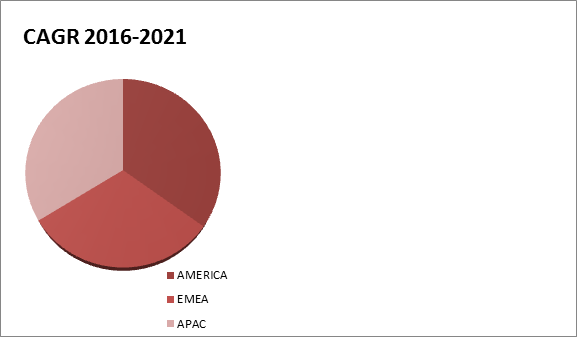
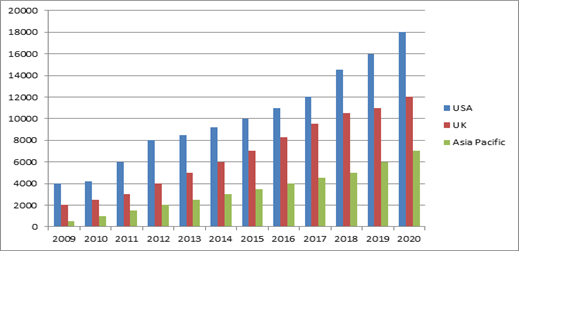
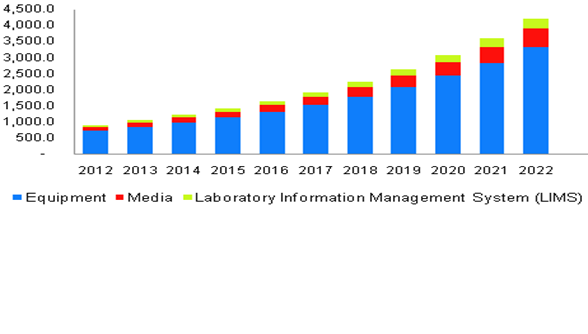
Biobanking 2017
Sensing the raising importance of Biobanks, ConferenceSeries LLC Ltd hosted the “3rd International Conference & Exhibition on Tissue Preservation and Biobanking” (Biobanking-2017), during August 23-24, 2017 in San Francisco, USA with a theme “New Scientific Innovations in Development of Tissue Science and Biobanking Technologies”. Benevolent response and active participations were received from the Editorial Board Members of Conference Journals as well as from the Biobank project managers, Embryologists, Hematologists, Stem Cell researchers, Scientists, Doctors, Students and Leaders from the fields of Cell and Stem Cell Research, who made this event inspiringly successful.
The Biobanking-2017 Conference was carried out through various sessions with discussions on the following thought provoking and cerebrating scientific tracks:
· Human cancer biobank
· Biorepository & Biospecimen
· Disease based biobank
· Cryopreservation Methods
· Vitrification
· Brain Banking
· Biobank Ethics
· Biobank in Microbiology
· Next Generation Biobanking
· Biobank in Genomics
· Fertility biobanks
· Germplasm Bank
· Immune banking
· Biobank Applications
· Biobanking Informatics
· Market Analysis in Biobanking
· Tissue engineering
· Stem cell Biobanking
The Organizing Committee would like to thank the moderator Dr. Joel I. Osorio, Westhill University School of Medicine, Mexico and Dr. Seungil Ro, University of Nevada, USA for their contribution which resulted in smooth functioning of the conference.
The conference was initiated and embarked with an opening ceremony followed by Keynote presentations, workshop and a series of lectures delivered by both Honorable Guests and members of the Keynote forum. The peerless people who promulgated the theme with their Keynote presentations were;
Panayiotis Zavos- The evolution and current status of sperm cryopreservation (The Andrology Institute of America, USA)
Heiko Zimmermann - Improved methods and procedures for pluripotent stem cell preservation, storage stability and validation (Fraunhofer Institute for Biomedical Engineering, Germany)
Igor Katkov - Cryopreservation by vitrification: Basic thermodynamic principals, methods and devices (Belgorod National Research University, Russia)
Charles F Mahl - Prolotherapy the first choice in Regenerative Medicine (GenLife Institute for Regenerative Medicine and Stem Cells, USA)
Aubrey de Grey - Cryopreservation of organs and organisms: Signs of a new era(SENS Research Foundation, USA)
Ken yaegaki- Transplantation of hepatocyte like cells derived from human tooth into the animals with liver conditions (Nippon Dental University School of Life Dentistry, Japan)
Various sessions were chaired and co-chaired by: Panayiotis Zavos (The Andrology Institute of America, USA); Heiko Zimmermann (Fraunhofer Institute for Biomedical Engineering, Germany); Dr. Debra Aub Webster, (Cardinal Health Regulatory Sciences, USA); Ken yaegaki(Nippon Dental University School of Life Dentistry, Japan )
Conferenceseries LLC Ltd has taken the privilege of felicitating Biobanking-2017 Organizing Committee, Editorial Board Members and Keynote Speakers who supported for the success of this conference.
The esteemed guests, keynote speakers and researchers shared their innovative research and vast experience through their informative presentations at the podium of Biobanking-2017. We are glad to inform that all accepted abstracts for the conference have been published in Journal of Tissue Science & Engineering: Open Access as a special issue.
We are also obliged to various experts, company representatives and other eminent scientists who supported the conference by facilitating the discussion forums. We sincerely thank the Organizing Committee Members for their gracious presence, support, and assistance. With the unique feedback from the conference, Conference Series would like to proudly announce the commencement of the “9th International Conference & Exhibition on Tissue Preservation and Biobanking &Tissue science and Regenerative medicine
November 9-10, 2018 Atlanta, USA
Mark your calendars for the upcoming Conference; we are hoping to see you soon!
For More details: http://biobanking.conferenceseries.com/
Conference Highlights
- Cell and Tissue Banking:
- Cryopreservation Methods:
- Blood Banking and Donation:
- Biobanking for Rare Disease:
- Bio-repository and Biospecimen:
- Biobanking in Microbiology :
- Fertility Preservation:
- Human Cancer Biobank:
- Next Generation Biobanking:
- Stem Cell Biomarkers
- Stem Cell Niches
- Biobank ethics
- Neurobank
- Vitrification
- Role of Biobank in Genomics & Personalised Medicine
To share your views and research, please click here to register for the Conference.
To Collaborate Scientific Professionals around the World
| Conference Date | April 23-24, 2018 | ||
| Sponsors & Exhibitors |
|
||
| Speaker Opportunity Closed | Day 1 | ||
| Poster Opportunity Closed | Click Here to View | ||
Useful Links
Special Issues
All accepted abstracts will be published in respective Our International Journals.
Abstracts will be provided with Digital Object Identifier by















